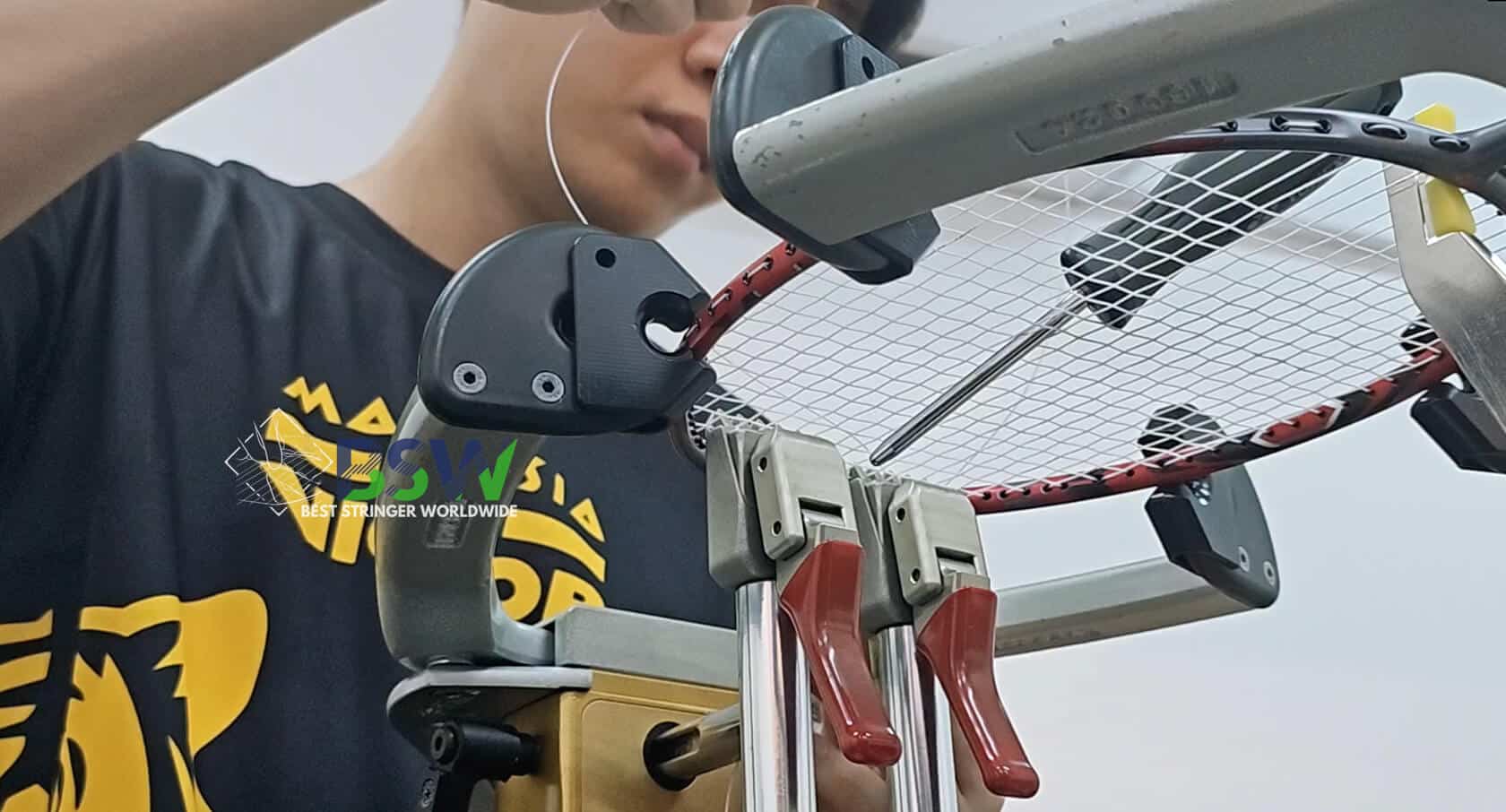Welcome to the Best Stringer Worldwide (BSW) Stringing University’s comprehensive guide on badminton racquet frame shapes. In this educational journey, we’ll explore how the design of racquet frames has evolved over time and how these changes affect your game. Whether you’re a player looking to improve your skills or a budding stringer interested in our badminton stringing courses, this knowledge will enhance your understanding of racquet technology.
Racquet Frame Shape Simulator
This simulator, created by BSW Best Stringer Worldwide, helps visualize how different frame shapes affect racquet performance.
Understanding Racquet Frame Shapes
The shape of a badminton racquet’s frame plays a crucial role in its performance. Let’s delve into the main types of frame shapes and their characteristics:
Box-Shaped Frames: The Sturdy Classic
Box-shaped frames were among the earliest designs in badminton racquets. These frames are characterized by their robust and sturdy structure.
Key features:
- High frame rigidity
- Excellent torsional support
- Superior control
- Higher air resistance during swings
Box-shaped frames are ideal for players who prioritize control and power in their shots. However, the trade-off is slightly reduced swing speed due to increased air resistance.
Wing-Shaped Frames: Embracing Aerodynamics
As badminton technology advanced, manufacturers introduced wing-shaped frames to address the air resistance issue of box-shaped designs.
Key features:
- Reduced air resistance
- Faster swing speeds
- Ability to generate powerful, aggressive returns
- Slightly less control compared to box-shaped frames
Wing-shaped frames are perfect for players who rely on speed and aggressive play styles. They allow for quicker movements and faster shots, but may require more skill to control precisely.
Hybrid Designs: The Best of Both Worlds
Recognizing the strengths of both box and wing shapes, racquet manufacturers began developing hybrid designs. These frames combine elements of both shapes to optimize performance.
Examples of hybrid designs include:
- Trapezoidal cross-sections
- Hexagonal cross-sections
- Diamond cross-sections
These hybrid shapes aim to balance structural strength with aerodynamic efficiency, offering a middle ground between control and speed.

The Three-in-One Frame: A Case Study
Some manufacturers have taken the hybrid concept even further. For instance, let’s examine a unique design that incorporates three different frame shapes in a single racquet:
- Box shape at the T-joint: Enhances frame rigidity and provides high torsional support.
- Wing shape at 3 and 9 o’clock positions: Reduces air resistance and increases swing speed.
- Trapezoidal shape at the top of the frame: Offers aerodynamic benefits while maintaining structural integrity.
This innovative approach demonstrates how manufacturers are continually seeking to optimize racquet performance by combining the benefits of different frame shapes.
Beyond Shape: Ultra-Thin Frames
In the pursuit of even greater speed and maneuverability, some manufacturers have developed ultra-thin frame designs. These frames feature a cross-sectional area reduced by approximately 20% compared to standard designs.
Benefits:
- Further reduction in air resistance
- Increased swing speed
Potential drawbacks:
- Possible decrease in frame strength
- Reduced torsional performance
Players considering ultra-thin frames should weigh these factors carefully and consider their playing style and skill level.
Historical Perspective: The Transition from Aluminum to Carbon
As we explore frame shapes, it’s worth noting the significant shift from aluminum to carbon fiber in racquet construction. During this transition, some early carbon fiber racquets featured semi-circular cross-sections, mimicking the shape of aluminum frames. This design choice facilitated easier manufacturing during the early days of carbon fiber racquet production.
Quick Quiz: Test Your Knowledge
Which racquet frame shape is known for providing the best control but has higher air resistance?
Comparing Frame Shapes: A Detailed Analysis
To help you better understand the differences between various frame shapes, let’s break down their characteristics in a comprehensive table:
| Frame Shape | Control | Speed | Power | Air Resistance |
|---|---|---|---|---|
| Box | Excellent | Moderate | High | High |
| Wing | Good | Excellent | High | Low |
| Hybrid | Very Good | Very Good | High | Moderate |
| Ultra-Thin | Moderate | Excellent | Moderate | Very Low |
This table provides a quick reference for comparing the performance characteristics of different frame shapes. Keep in mind that these are general trends, and individual racquet models may vary.
Implications for Players and Stringers
Understanding racquet frame shapes is crucial for both players and those interested in badminton stringing. Here’s why:
- For Players:
- Choosing the right frame shape can complement your playing style.
- Knowing how frame shapes affect performance helps in selecting the best racquet for your needs.
- Understanding these concepts can aid in adapting your technique to maximize racquet performance.
- For Aspiring Stringers:
- Frame shape knowledge is fundamental in our badminton stringing courses.
- It helps in understanding how string tension interacts with different frame designs.
- This knowledge is valuable for providing informed recommendations to players.
String Tension Calculator
Continuing Your Badminton Education
At BSW Stringing University, we’re committed to providing comprehensive education on all aspects of badminton equipment. Our badminton stringing certification programs cover topics like frame shapes, string properties, and how they interact to affect player performance.
Whether you’re a player looking to deepen your understanding of equipment or an aspiring stringer aiming to start a career in racquet servicing, our courses offer valuable insights and hands-on experience.
Remember, the world of badminton technology is constantly evolving. Staying informed about the latest developments in racquet design can give you an edge, whether you’re on the court or behind the stringing machine.
We hope this guide has enhanced your understanding of badminton racquet frame shapes and their impact on play. Continue exploring our educational resources to further your knowledge in badminton equipment and stringing techniques.

About Best Stringer Worldwide
Best Stringer Worldwide is a comprehensive badminton and tennis stringing education program. We provide in-depth training on stringing techniques, racquet technology, and player-specific customization. Our curriculum is designed to help stringers understand and meet the needs of all badminton players, from casual enthusiasts to competitive athletes.
Read More